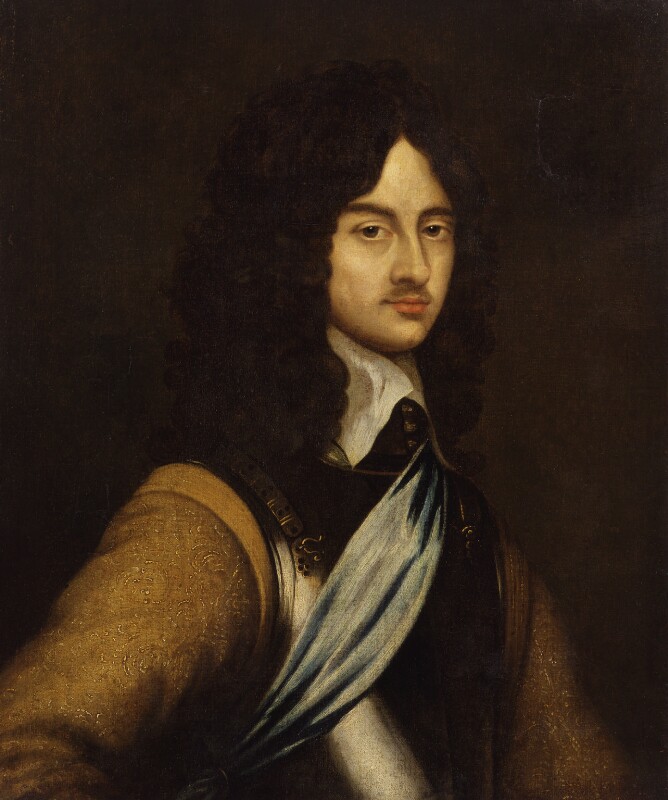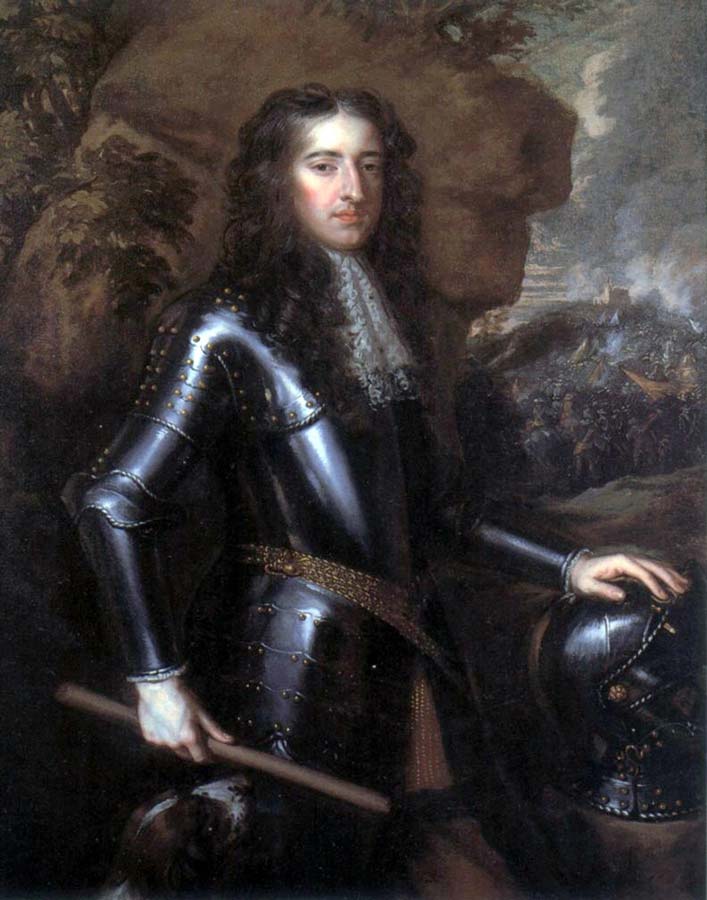Charles II
Charles II was born on 29th May 1630 at St James' Palace, son of Charles I and Henrietta Maria. He fought alongside his father against Oliver Cromwell's forces throughout much of the English Civil War. He escaped to the continent before his father was beheaded on 30th January 1649. In 1650 he landed in Scotland and was crowned King of Scots at Scone on 1st January 1651 but his attempt to regain the English throne failed when Cromwell defeated him at the Battle of Worcester. Charles was on the run for several weeks (hiding in an oak tree at one point according to legend) before making his remarkable escape to France. Cromwell died in 1658 and his son Richard resigned leaving the way clear for the restoration of the Charles to the throne. The Great Plague in 1665 and the Great Fire of London the following year overshadowed his reign. Charles was a great patron of the arts and founded the Royal Society.
Marriage
In 1662 Charles married Portuguese infanta Catherine of Braganza, daughter of King John IV (she is buried in Portugal). They had no children but Charles had 13 children by various mistresses.
Coronation
Charles rode into London on 29th May 1660 to popular acclaim. Due to the lengthy preparations and the fact that a new set of regalia had to be made for the occasion, as the previous set had been melted down during the Commonwealth period, his coronation did not take place in the Abbey until 23rd April 1661. The cost was over £12,000. Samuel Pepys, the famous diarist, was at the ceremony and detailed the service in his diary. This coronation was the last time the traditional procession from the Tower of London took place. It was the first time that tiered seating was constructed in the transepts so that the congregation could see the ceremony. Previously a specially built raised 'theatre' of wood had been built in the lantern for the ceremony and the monarch had to ascend steps to the throne.
Burial and wax effigy
He died at Whitehall on 6th February 1685 (1684 in contemporary dating) and the body was embalmed. His coffin, made of wood enclosed in a lead coffin covered with purple velvet, lay in state in the Painted Chamber within the Palace of Westminster before burial in the Abbey on 14th February in a vault in the south aisle of Henry VII's chapel. A box containing his entrails was laid beside the coffin. His coffin plate had a Latin inscription which can be translated "The remains of the Most Noble and Serene Prince Charles II, King of England, Scotland, France and Ireland, Defender of the Faith etc. He died on the 6th day of February, the year of Our Lord 1684, in the 55th year of his age, and the 37th of his reign".
Instead of a funeral effigy, as had been usual at previous royal funerals, only an imperial crown on a purple cushion lay on the coffin. The funeral was not elaborate and was held between 8 and 9:00pm. The reason for the low-key funeral and lack of funeral effigy may well have been because of the King's conversion to Catholicism. The procession entered through the door into the south transept not by the main west door.
No monument was erected for him (probably due to lack of room in the chapel) but a life size wax effigy, 6 feet 2 inches tall, stood by his grave for over a century before being collected, with others, for display in the small Islip chapel. This was made in 1686 and the face is a remarkable likeness, possibly by sculptor John Bushnell. It may have been taken from a life cast of the king's face (this was a fashionable thing to have done at this period). It shows his swarthy complexion, large nose and prominent "Hapsburg" lower lip. The effigy is dressed in robes of the Order of the Garter (a blue silk velvet mantle with red silk velvet surcoat and hood). Underneath the figure wears a shirt and drawers with a doublet and breeches of cloth of silver. The black velvet hat includes ostrich and heron feathers. Jewellery from the figure was stolen during a funeral in 1700 and it has lost its sword. The wig is an 18th century replacement. The original showcase still exists in the Abbey collection but is not displayed.
Frances Stuart, Duchess of Richmond, who was one of the ladies who rejected his advances, also has an effigy in the Abbey collection.
The effigy is on display in the Queen's Diamond Jubilee Galleries together with two velvet copes probably used at his coronation (crimson) and his funeral (dark purple).
Further reading
King Charles II by Antonia Fraser
The Funeral Effigies of Westminster Abbey edited by A. Harvey & R. Mortimer (revised 2003)
A circumstantial account of the coronation of King Charles the Second by Sir Edward Walker, 1820
Music and ceremonial at British coronations from James I to Elizabeth II, by M. Range, 2012
The entertainment of...Charles II in his passage through...London to his coronation... by John Ogilby, 1662
Oxford Dictionary of National Biography 2004
British Royal...funerals, music and ceremonial since Elizabeth I by M. Range 2016
Papers concerning this funeral are at the College of Arms in London, the British Library and in the Lord Chamberlain's papers at The National Archives.

© National Portrait Gallery, London [Creative Commons CC BY-NC-ND 3.0]

This image can be purchased from Westminster Abbey Library
Image © 2024 Dean and Chapter of Westminster

This image can be purchased from Westminster Abbey Library
Image © 2024 Dean and Chapter of Westminster

This image can be purchased from Westminster Abbey Library
Image © 2024 Dean and Chapter of Westminster

This image can be purchased from Westminster Abbey Library
Image © 2024 Dean and Chapter of Westminster










